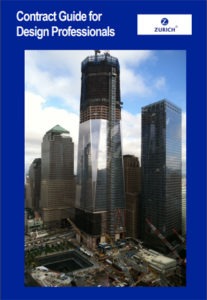The City of North Miami hired an engineering firm (“BB&L”) to assist it in implementing an environmental cleanup plan for a landfill that was on the U.S. EPA National Priorities List because of uncontrolled hazardous releases that included ammonia leaching into the groundwater. The firm conducted hydrogeologic studies of the aquifer and used those studies to design a leachate collection system. It also did pump tests, computer modeling , surface and groundwater sampling, and design services related to relocating an earthen dike.
When the City terminated the engineering contract and refused to pay the balance of fee that was currently due, the engineer sued the City to recover its unpaid fee. In defending against the suit, the City argued that the engineer was a “Potentially Responsible Party” (PRP) and was, therefore barred from recovering the costs it claimed. What the City was arguing was that the engineer contributed to increased cleanup costs and had liability under the Comprehensive Environmental Response, Compensation, and Liability Act (“CERCLA” or “Superfund”) as either an “operator” of a hazardous waste facility or an “arranger” for the disposal of hazardous wastes at a facility.
In reviewing the matter, the court concluded that the engineer had negligently performed some of its professional services. In particular, it found that one of the pump tests had been done negligently and that the engineer’s subsequent reliance on the test results constituted malpractice. This, however, did not, as far as the court was concerned, make the engineer a PRP. As explained by the court, a PRP is an owner or operator of a CERCLA facility. The City based its allegation that the engineer was an “operator” or “arranger” on any of the following three theories: (1) The engineer was an “operator” or “arranger” because it had “operational control” of the site; (2) The engineer failed to develop an adequate remedial design permitted the ammonia to continue migrating through the ground water; and (3) The engineer’s excavation of soil in order to obtain test samples of the waste that was already in the ground contaminated the “clean cover” and therefore, constituted “arranging” disposal of hazardous waste.
The court rejected all these theories. It concluded that “engaging in clean-up activity at a facility does not qualify as the type of ‘operation’ CERCLA contemplates.” Before a party can be found to be an “arranger,” the court says that “party must take an affirmative step to introduce hazardous substances to an area – mere inaction or inept action which fails to remedy but does not worsen existing contamination is not sufficient.” The City did not allege that the engineer brought any contaminant onto the site and released it. “Here, the City alleges BB&L’s negligence enabled ammonia to continue to migrate through the landfill. This is insufficient to establish arranger liability because no affirmative step was taken.”
The court also rejected the City’s argument that BB&L’s action in refilling excavated pits with the same soil that was removed for testing purposes constituted “disposal.” This gets into the issue of whether merely inadvertently moving contaminated material around a site is enough to render a firm liable under the strict liability aspects of CERCLA. The court said it does not.
A second flaw, said the court, with the City’s argument, is that “a response action contractor cannot be liable for response costs unless it is negligent and such negligence causes the release of a hazardous substance.” In this case, although there had been negligence in the remedial design services, the court found that there was no evidence that the soil investigation had been performed negligently. The court concluded that the engineer’s excavation activities did not cause it to become a CERCLA arranger, and that it was, therefore, not a PRP within the meaning of the law. Bashland, Bouck & Lee v. City of North Miami, 96 F.Supp.2d 1375 (S.D.Fla. 2000).
Risk Management Note: Those who have been following court decisions concerning the liability of design professionals and contractors under CERCLA should be delighted with this latest decision. It is an important victory. Contractors have argued all along that when they are working to clean up sites they should be treated as part of the solution and not part of the problem. By subjecting designers and contractors to strict liability under Superfund in cases such as that reported here, other courts have caused a chilling effect on the ability and willingness of designers and contractors to perform work related to the cleanup of contaminated sites. There have been a number of cases holding contractors liable as PRP’s under the theory that in moving contaminated soil around a site they either “arranged” for its disposal or that they “transported” it and therefore, have what is known as “transporter” liability. Design Professionals have been found liable as PRP’s under a number of theories. In one case, an engineer was held liable as an “arranger” merely for offering its client (the project owner) a number options of licensed landfills for the off-site disposal of waste being removed from the cleanup site. This was despite the fact that the engineer exercised due diligence and performed its professional services within the standard of care.
It is to be hoped that the logic of this decision will be followed by other courts around the country.
About the author: Article written by J. Kent Holland, Jr., a construction lawyer located in Tysons Corner, Virginia, with a national practice (formerly with Wickwire Gavin, P.C. and now with Construction Risk Counsel, PLLC) representing design professionals, contractors and project owners. He is founder and president of a consulting firm, ConstructionRisk, LLC, providing consulting services to owners, design professionals, contractors and attorneys on construction projects. He is publisher of ConstructionRisk.com Report and may be reached at Kent@ConstructionRisk.com or by calling 703-623-1932. This article is published in ConstructionRisk.com Report, Vol. 2, No. 11 (Nov 2000).
Copyright 2000, ConstructionRIsk.com, LLC


Connect